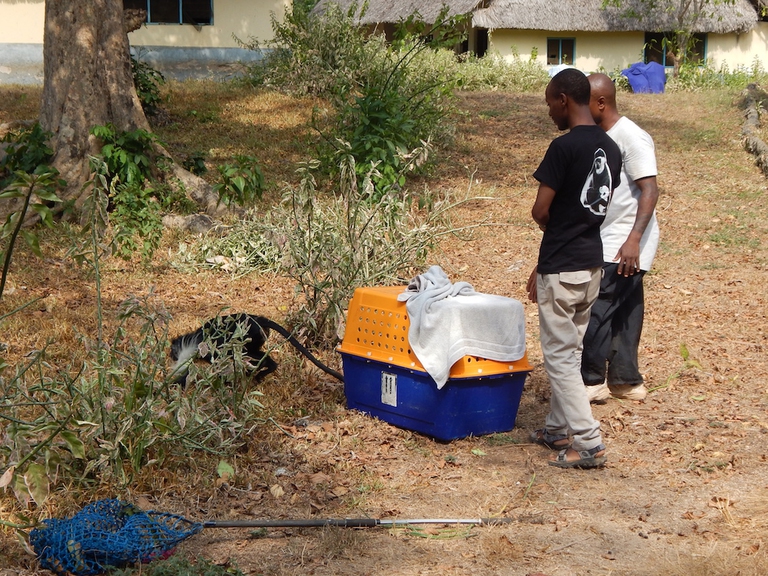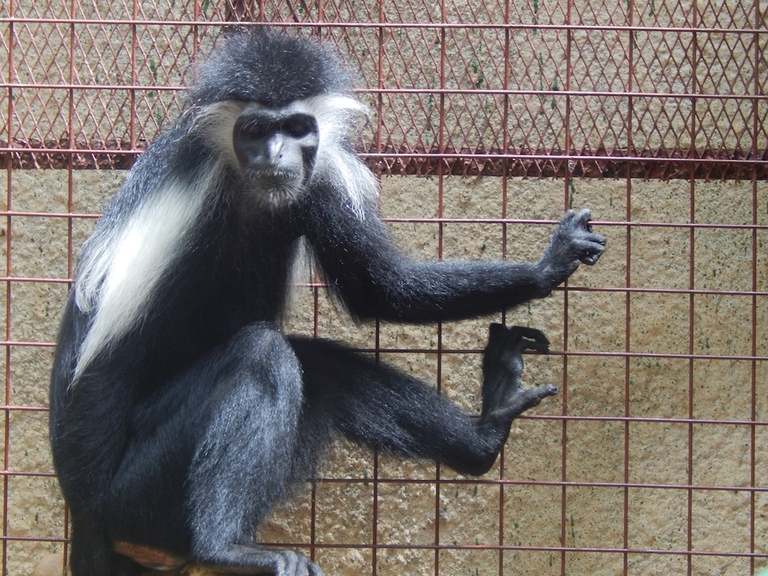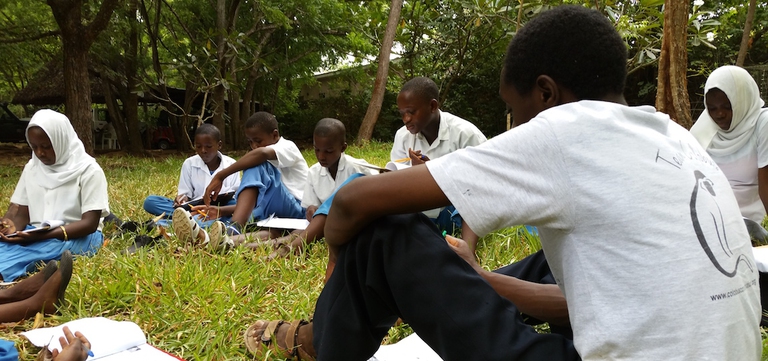
The Amazon became an alternative classroom during the pandemic. Now, the educational forest in Batraja, Bolivia, lives on to teach children and adults the value of nature.
The rare Angolan black and white colobus monkey lives high in the trees and hardly ever comes down to the ground. It is a leaf eater and the forest is essential to its survival. On the southern coast of Kenya, where the coral rag forests which are extremely rich in biodiversity have slowly been disappearing in favour of
The rare Angolan black and white colobus monkey lives high in the trees and hardly ever comes down to the ground. It is a leaf eater and the forest is essential to its survival. On the southern coast of Kenya, where the coral rag forests which are extremely rich in biodiversity have slowly been disappearing in favour of cottages and big tourist resorts, colobus monkey numbers are under threat.
“Habitat loss is the biggest problem for threatened colobus monkey,” says Tony, local guide for an organisation that aims to protect local primate species, Colobus Conservation in Diani, Kenya. “We now have a lot more yellow baboons who love open areas,” he adds. Following the annual census conducted in Diani every October, which counts the number of monkeys living within a radius of 10 kilometres, the number of baboons has gone up from 156 to 186, whereas the number of Colobus monkeys has decreased from 399 to 372 in two years.
Diani’s forests are part of the Coastal Forests of Eastern Africa Global Biodiversity Hotspot. This hotspot covers Africa’s eastern edge starting from Southern Somalia’s Jubba and Shabelle rivers and ends at the Limpopo river in Mozambique. Today due to urbanisation and agriculture around 90 per cent of the vegetation within this hotspot has been lost. Indeed, from the original 300,000 square kilometres, (approximately) only 30,000 remain. However, what is left of the forest is still home to astonishing levels of biodiversity, and the Critical Ecosystem Partnership Fund is working hard to protect this vital ecosystem by supporting conservation projects which focus on civil society participation.
But there are other challenges too. Colobus monkeys don’t necessarily distinguish between tree branches and overhead power lines, which can be very dangerous as they leap from tree to tree. They’re also picky eaters who love to feed themselves on baobab trees and other indigenous trees such as the Mkongolo.
At the primate conservation and rescue centre which opened its doors in 1997, the team trims branches near power lines and lobbies for their insulation to protect resident monkeys. They build aerial bridge ladders called ‘colobridges’ going from the top of trees to others across the road. They also engage in native tree planting to satisfy the colobus monkeys’ nutritional needs.
Moreover, Colobus Conservation runs an animal welfare programme where they save and rehabilitate over 150 colobus monkeys, vervets, sykes, bush babies and baboons a year. These receive onsite treatment before being re-introduced into the wild.
In 2011, the centre welcomed Betsy, the first hand-reared Angolan black and white colobus in the world. “Before this no one had been able to hand-rear Angolan colobus due to their incredibly complex diet and sensitive temperament,” says Conservation Manager Kelly Martin. “Betsy now helps hand-rear other orphan colobus, preparing them for release”.
The orphan care and rehabilitation centre is surrounded by a fence to minimise human contact and an in-house vet is present 24 hours a day, 7 days a week.
In addition, the team works to educate the local community on conservation issues and local wildlife by carrying out weekly workshops for primary and secondary school children. For anyone interested in learning more about these monkey’s survival, you can visit the centre in Diani and walk around the forest to see them in their natural habitat.
Siamo anche su WhatsApp. Segui il canale ufficiale LifeGate per restare aggiornata, aggiornato sulle ultime notizie e sulle nostre attività.
![]()
Quest'opera è distribuita con Licenza Creative Commons Attribuzione - Non commerciale - Non opere derivate 4.0 Internazionale.
The Amazon became an alternative classroom during the pandemic. Now, the educational forest in Batraja, Bolivia, lives on to teach children and adults the value of nature.
Our species took its first steps in a world covered in trees. Today, forests offer us sustenance, shelter, and clean the air that we breathe.
Bangladesh suffered widespread damage as a result of Cyclone Amphan. Yet the Sundarbans mangrove forest acted as a natural barrier protecting the country from further destruction, as it has done countless times before.
On top of a 2.4 million dollar compensation, the indigenous Ashaninka people will receive an official apology from the companies who deforested their lands in the 1980s.
The tapir was reintroduced into Brazil’s Atlantic Forest, the country’s most at-risk ecosystem. The species can play a key role in the forest’s recovery.
Forests are home to 80 per cent of the world’s terrestrial biodiversity. This year’s International Day of Forests highlights the urgent changes needed to save them.
After a legal battle that lasted two years, Indonesia’s Supreme Court has revoked the permit to mine for coal in the forests of South Kalimantan in Borneo.
The list of human and animal victims of the Australia wildfires keeps growing – one species might already have gone extinct – as the smoke even reaches South America.
Areas where the FARC guerrilla used to hold power in Colombia have faced record deforestation. Farmers cut down trees, burn land and plant grass for cows. Because, “what else can we do for a living here in the Colombian Amazon”? An intimate report from the heart of the felled forest in Caquetá.











